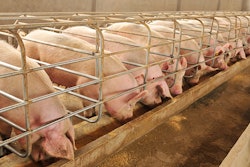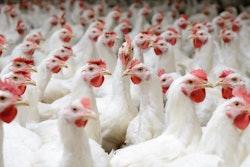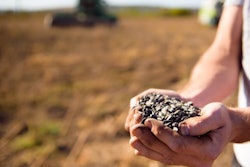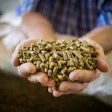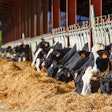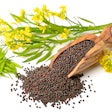
Improving nitrogen and phosphorus efficiency in broiler diets can reduce their environmental impact
Feed ingredients can be used to improve nitrogen and phosphorus efficiency in broiler diets, therefore reducing their environmental impact, according to Dr. Henk Enting, senior technology lead – poultry at Cargill Animal Nutrition.
Enting spoke November 15 as part of the Feed Strategy Seminar Series at EuroTier 2022 in Hannover, Germany.
Nitrogen efficiency
Studies have shown that reducing protein – soybean meal – in broiler diets, nitrogen efficiency is improved.
“By reducing the protein, by reducing the soya, you actually get a better nitrogen efficiency, but also a better carbon footprint of the feed and also better balances between the costs and the nitrogen deficiency and the carbon footprint you definitely are going after,” Enting said.
Lower protein levels also equal lower emissions and less footpad dermatitis, he added.
Trials show certain phytogenic feed additives can further improve nitrogen utilization by changing the microbiota and the digestibility of the feed. Phytogenics have also been shown to lower ammonia emissions in broiler chickens.
Phosphorus efficiency
Inorganic phosphorus supply is limited. Over time, inclusion levels of phytase have become higher in order to maximize phytate degradation, Enting said. Optimizing the calcium source and level helps to maximize phytate degradation and to move to low inorganic phosphorus levels; trials have been performed to remove inorganic phosphorus from broiler grower and finisher feeds.
“We have seen that the calcium level and also the calcium source have a very big role on the degradation of the phytates,” Enting said.
Studies have found that it is possible to replace monocalcium phosphate with higher dose of phytase without compromising broiler performance when there is enough substrate of phytate. There is no effect from replacing monocalcium phosphate by additional phytase inclusion on feed intake or bone strength, but there is a negative effect of high calcium levels.
Other alternative raw materials
Enting said there is a lot of research going on to determine the best options for the future and study other alternative raw materials that can reduce the environmental impact of poultry production, including insect protein, algae, meat and bone meal, and local ingredients.
“A lot of work is going on. But one of the main things, I think, is important: If you look at the reduction of the emissions, and also of the improvement of animal welfare, that actually have added that extra layer of complexity, not only performance anymore, not only the cost of the feed, that we have to do a lot of different scenarios to find out what is the best direction for the future,” Enting said.

